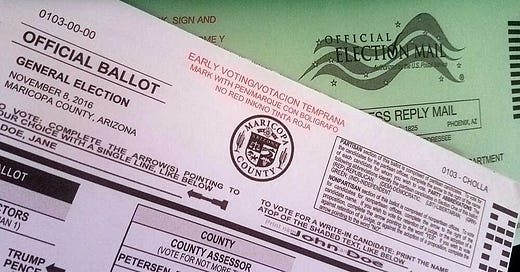Low Propensity Voter.
That is a term you should note and take effort to understand, because you’ll hear it on repeat between now and November until your eardrums bleed. Both parties have base voters, those who turn out for every election and frequently for primaries, and thanks to sophisticated data tracking and technology, can get a good read on how independent voters lean. For 37 to 40 states, the electoral votes are all but baked into the cake. In other words, there aren’t enough low propensity voters to offset the base votes that make states like Massachusetts, Oklahoma, Maryland, or Wyoming so predictable over the short run.
Low propensity voters are those who create unexpected results, often amidst a coalition shift within the base. Those are the folks who came out from the tall timber of the Northwoods and cast a vote for the first time in decades for an economic nationalist named Donald J. Trump in 2016, swinging Wisconsin’s 10 electoral votes away from the blue team for the first time since 1984. They are the factory workers who can neither tolerate the Paul Ryan wing of the GOP, nor accept that their grandfather’s Democrat Party backs all sorts of regressive evil and debauchery, so they’ve been staying at home – until the right guy comes along – and they swing 20 (now 19) electoral votes in Pennsylvania, or 16 (now 15) in Michigan.
Within these pages, I’ve written extensively about the fool’s gold that is ballot harvesting. How naïve can we be, to believe our enemies are going to let us in on secret advice about how to vanquish them in quasi-elections, for starters? The thought of such a thing reminds me of Samson telling Delilah all the wrong ways to sap him of his strength. If you need a primer, here is a chilling summary of what will happen in the pivotal industrial states once ballot harvesting is fully approved of and subsequently legalized after our tacit endorsement and participation. Rather than promoting the vulgar ballot harvesting terminology, many on the right have warmed up to ballot chasing, which seeks to turn out the low propensity voter and thereby gain the requisite edge for eking out elections.
With ballot chasing, a multi-pronged effort is made to have more voters request mail-in ballots, and to check boxes all the way down the precinct listings to make sure these all get turned in, rather than relying on an in-person Election Day vote that may not materialize due to many items:
· Traffic conditions
· Inclement weather
· Illness
· The county decides to sabotage voting equipment only in areas occupied by strong supporters of the party they don’t want to win the election, deliberately disenfranchising its own voters without penalty
Now that we are familiar with a few things that can go wrong, let’s cut to the chase. Aside from the math guaranteeing Democrats will rule over us as long as ballot harvesting expands instead of retracts, the very premise of ballot harvesting and/or ballot chasing is that our candidates are not getting enough votesto win elections the old-fashioned way, so we must make a change. Let’s use Arizona as a proving ground for these points, using quasi-elections including President Trump, and arguably the second-most iconic figure in the short history of the America First movement, Kari Lake, who should be entering her second year as Arizona’s governor this very week:
Presidential – 2020
Keep reading with a 7-day free trial
Subscribe to Captain K's Corner to keep reading this post and get 7 days of free access to the full post archives.




